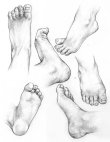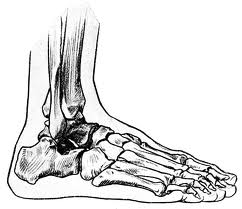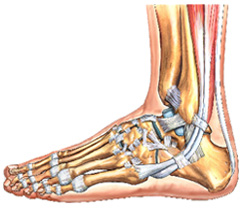Even though our feet may seem rather plain, they are actually one of the most amazing structures of our bodies. Each foot has 26 bones, 30 joints, and more than 100 ligaments and muscles to keep it functioning. We can help your feet function better.
It is important that our feet are healthy
Our feet support our weight, balance our bodies and carry the average person more than 100,000 miles in a lifetime. While strong and flexible enough to absorb 500 pounds of impact (for example impact caused by running) the structure of the foot is extremely delicate, which is why foot problems are so common. The foot has three main areas: Forefoot, Midfoot and Hindfoot


